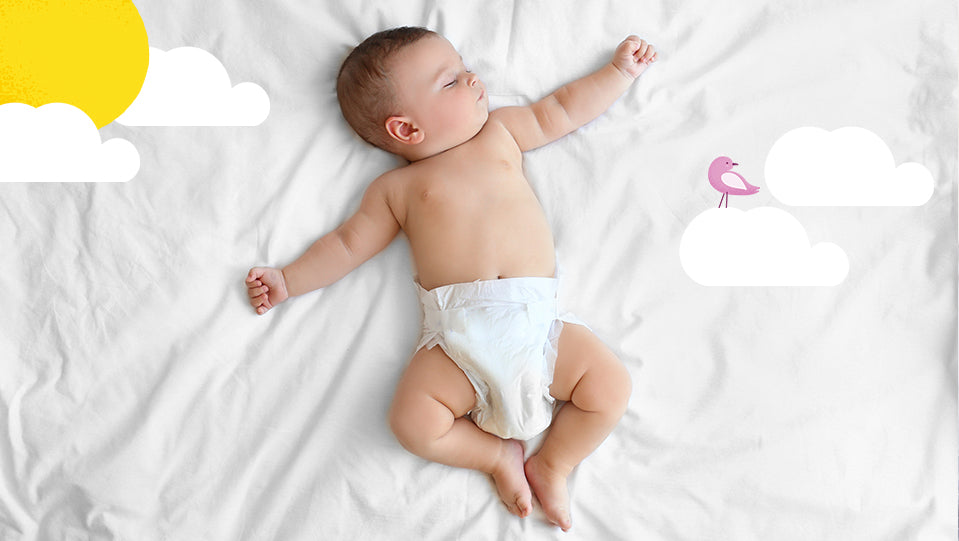With summer on the horizon, we thought it was a good time to share some tips for prepping for the summer months ahead. As the nights get warmer, it becomes harder to sleep - this is true for us but even more so for our babies. It isn’t until about 18 months - 2 years old that babies learn to properly regulate their temperature, so they rely on us to make sure their sleep environment is suitable for a hot, balmy night. Overheating is not only uncomfortable, but for babies it is also a risk factor associated with SIDS. There are a few factors that can come into play here, to ensure baby (and therefore you!) get a safe and good night’s sleep.
What should I dress my baby in for sleep?
You will need to consider a few factors when dressing your baby for their bedtime, including their room temperature and what sort of fabrics are used in their sleepwear. We recommend natural fibers such as cotton or merino wool. Many suggest merino is particularly good to use for the layer against their skin as it has so many great natural benefits, it’s odour resistant and fire retardant, but more relevant to this topic, it’s moisture wicking so it helps with temperature regulation. The only downside is I find it can get a bit itchy when right next to the skin, so I have always used these Uniqlo bodysuits for my babies. As a general rule babies only need one extra layer than adults, we would recommend this layer be a swaddle, or a sleep sack.
It’s really important you don’t dress your baby in a hat/beanie when you put them to sleep, not only is this a risk for overheating as heat escapes from their heads, it is also a suffocation risk if the beanie slips down over their face.
What temperature should my baby's room be?
The ideal temperature for your baby’s room is 18- 20°c. If you have a heat pump in your baby’s room you should set the temperature to this and keep it at that temperature all year around. If not, it might pay to invest in a good room thermometer and use a fan to cool it down to this temperature or a humidifier or panel heater to warm it to this temperature.
What bedding should I use?
Like the sleepwear fabric, we would recommend natural fibers are used for your baby’s bedding. Again, merino wool is a great option, due to the benefits listed above. We have a merino mattress protector as I felt so passionate about the benefits of merino wool we really wanted to include it in our airnest range. Another great option is Tencel. Tencel is a sustainable cellulose fiber derived from wood pulp. It is great for babies as it is super breathable, letting air flow freely around your babies sleep environment. Our airnest sheets are made from Tencel, we’ve had them tested for airflow and they came back with a 100% breathable rating. Tencel is also as ‘soft as silk’, when I moved Amelia from her cotton bassinet sheets to her Tencel cot sheets her bald spot completely grew back- just another added benefit!
While we are speaking about bedding, you should also consider what mattress your baby is sleeping on. Many mattresses on the market these days aren’t breathable, so they contain heat. You should also be wary of mattresses made of latex, although a natural material, it is known to retain heat, which we know is not ideal for babies. The airnest mattress is great as it is 95% air by volume, meaning it is 100% breathable. All our airnest products work together to provide a sleep environment that lets air flow freely, combating overheating.
What are the signs my baby is too hot?
A good way to tell if your baby is too hot or cold, is to look at the way they are sleeping. If they are splayed out with their arms and legs away from their bodies, it probably means they are too hot so you could remove a layer. You can also tell by touching their ears or neck, if their ears are hot or their neck is sweaty your baby is too warm.

